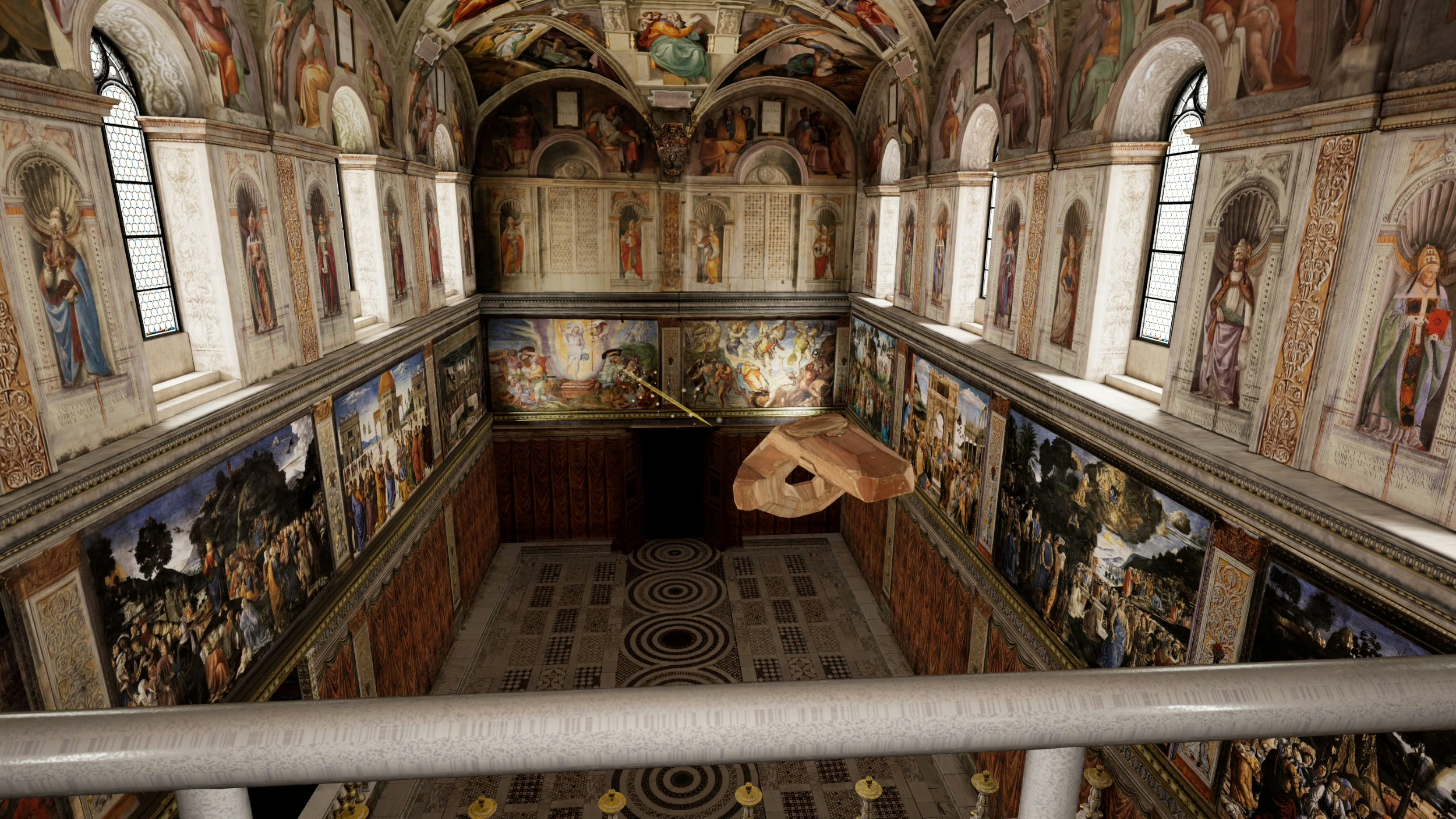The Sistine Chapel has become synonymous with Michelangelo’s artistic genius. As it turns out, it really wasn’t his choice to do it, but what a job he did! I wasn’t able to make it to the Sistine Chapel when I visited Italy, even though I would have loved it. However, it probably would have been full of other people, and I wouldn’t have gotten a very close look at the ceiling without binoculars. How amazing it is to be able to explore such places virtually!
About the Experience
Il Divino: Michelangelo’s Sistine Ceiling in VR is a great way to explore the amazing artwork of the Sistine Chapel. Not just the famous ceilings, but also the upper side walls and the entire wall behind the altar. Before this experience, I didn’t have a good concept of the sheer magnitude of it all.
Starting in the entryway, you are free to move around the floor. Even the floor itself is impressive due to its special marble patterns. Looking up high, you can see the famous paintings looking back down at you.
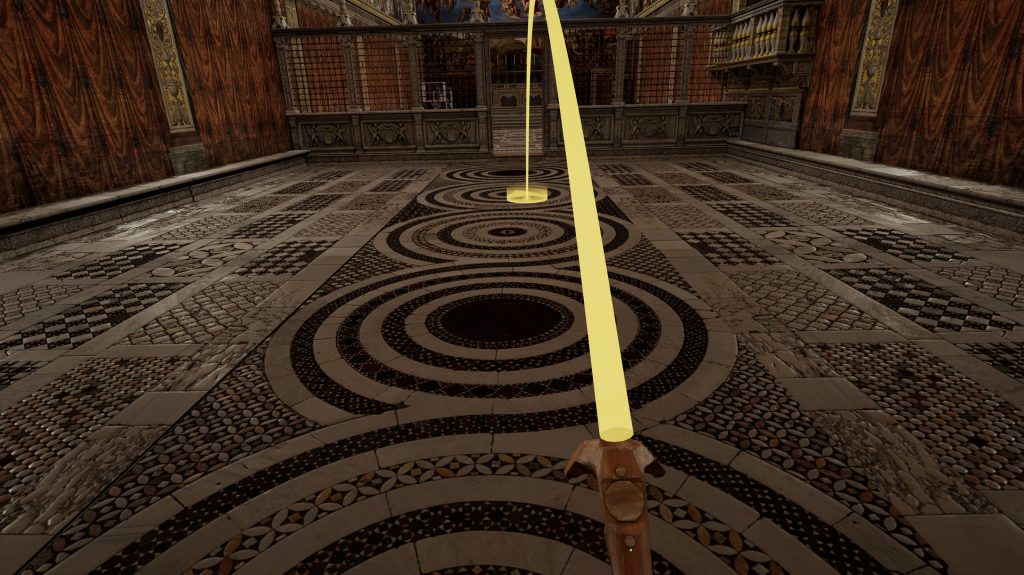
What if you want to get closer? As an interesting mechanism to retain immersion, you don’t just teleport to the ceiling. Instead, you go to the back corner, where you can find a conservator’s mobile aerial platform. Ride that platform up to the top, and you can get up close to the frescoes to see the details.
Unfortunately, I didn’t have a lot of luck operating the platform. It’s easy enough to activate it to use it, but actually moving around just had me going in weird directions. This could be an example of an experience created for the HTC Vive not working as well on other controllers, but I don’t know for sure. I did make my way around, but just didn’t have much control.
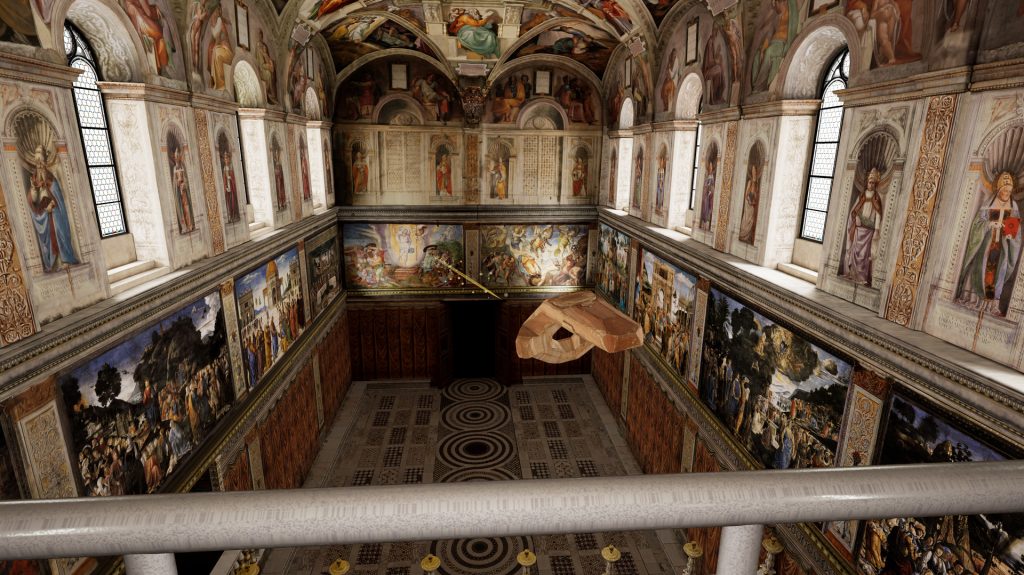
Instead of the mobile platform, you can also use wooden scaffolding. This is a cool effect since it’s what they believe Michelangelo himself used and when the Vatican did its restoration, they used a similar setup. This also didn’t seem to have a mode to move around (or it was a controller issue again).
Graphics
This type of experience really succeeds or fails on the quality of the artwork scans. Thankfully, these developers did things right: the paintings are scanned at very high detail. The building itself is put together well, too, including good detail on the floor stone.
In some experiences, the developers start with 3D scans of the whole building. This helps to truly capture the scene from every angle, but leaves many opportunities for glitches—see Church Art of Sweden for an example. The best experiences use a combination of 3D scans and handcrafted 3D models. In this case, it looks like the developers modeled the chapel interior from scratch and then overlaid the paintings. This results in a great look.
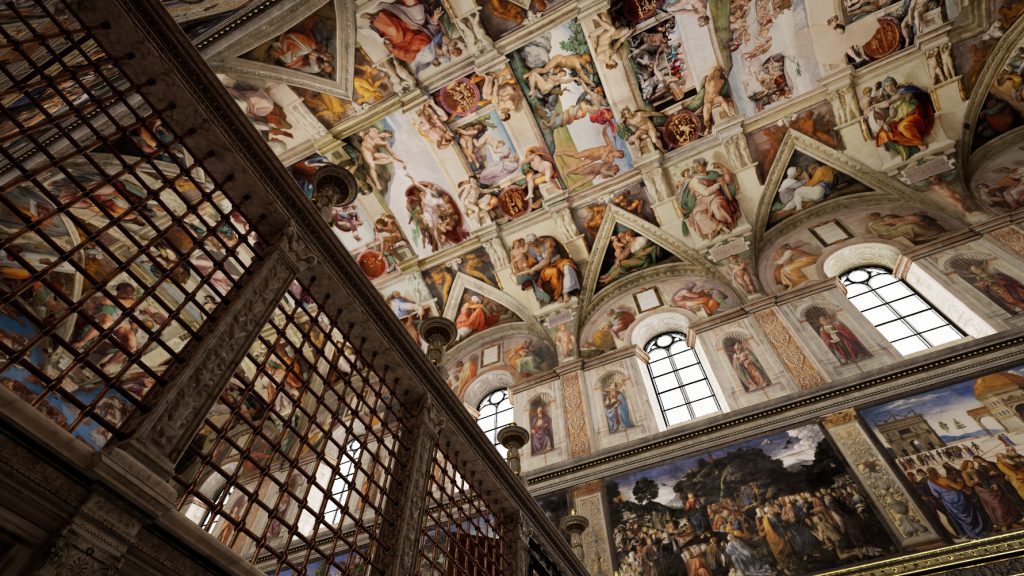
Information
To learn more, you can click on information points—over 100 of them, according to the product description. They cover Michelangelo’s work and the controversial cleaning of it in the 1980s and ’90s. (Seriously, click that link! The short encyclopedia entry is worth a read.)
The amount of information works well. I love being able to look around freely, then summon the information when I’m ready. I feel like a researcher or historian who gets free rein of the space and asks for details when needed. This is a great perk of VR museums; in traditional museums, the information either is or isn’t displayed.
Instead of using floating “info” balls or buttons, you point at elements of the paintings and click to learn more. Sometimes you get narration alone, but other times the image will change to show something noteworthy about the restoration or the original painting process.
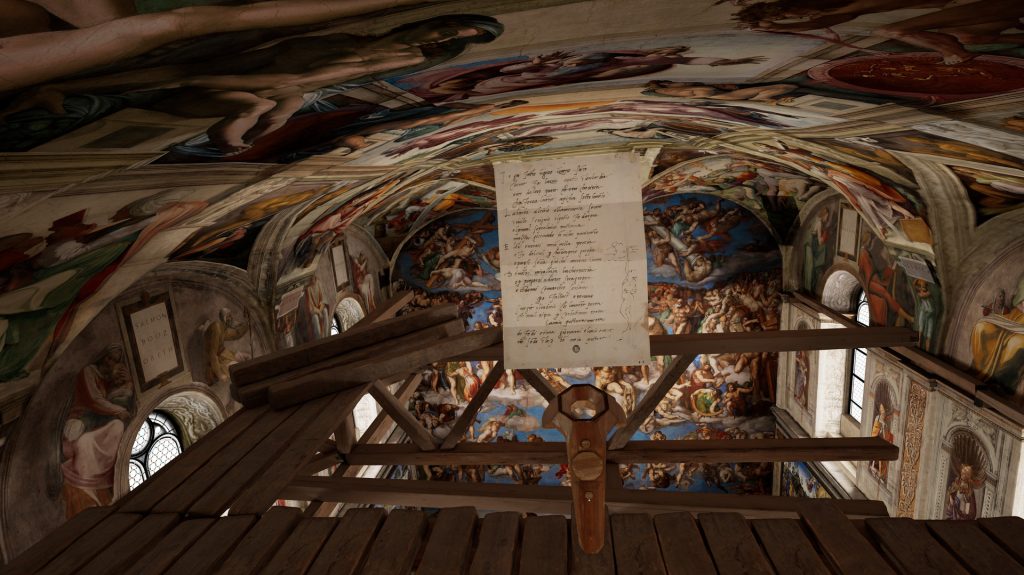
Interactivity
This experience is just interactive enough to allow exploration. In addition to moving freely, you can use the aforementioned scaffold. As you look around, point at the paintings to learn more.
Future Potential
Unless Michelangelo ends up adding anything new, I think this experience is pretty much locked in. I suppose the developers could release bug fixes or add more information, but I don’t expect much change here.
Summary
Pros
- High-quality graphics
- Lots of informative details about Michelangelo and the work
- Even the floor looks great!
Cons
- Movement with the scaffolding and lift both a bit unclear (easier with HTC Vive?)
Overall, I recommend this experience as a perfect way to learn about the Sistine Chapel and its artwork. I might have enjoyed some music playing faintly in the background, or dust floating by in rays of light from the windows, but that would have just been a bonus. This is a simple exploratory experience done well.
Related links:
